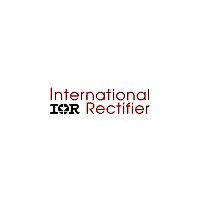IR3651STRPBF International Rectifier, IR3651STRPBF Datasheet - Page 15

IR3651STRPBF
Manufacturer Part Number
IR3651STRPBF
Description
IC CTLR PWM SYNC DC-DC 14SOIC
Manufacturer
International Rectifier
Datasheet
1.IR3651SPBF.pdf
(19 pages)
Specifications of IR3651STRPBF
Pwm Type
Voltage Mode
Number Of Outputs
1
Frequency - Max
460kHz
Duty Cycle
80%
Voltage - Supply
4.5 V ~ 13.2 V
Buck
Yes
Boost
No
Flyback
No
Inverting
No
Doubler
No
Divider
No
Cuk
No
Isolated
No
Operating Temperature
0°C ~ 125°C
Package / Case
14-SOIC (3.9mm Width), 14-SOL
Frequency-max
460kHz
Package
14-Pin SOIC (NB)
Circuit
Sync PWM Controller
Vcc (min)
4.5
Vcc (max)
13.2
Iout (a)
25
Switch Freq (khz)
programmable to 400kHz
Pbf
PbF Option Available
For Use With
IRDC3651 - KIT REF DESIGN SYNCH BUCK REG
Lead Free Status / RoHS Status
Lead free / RoHS Compliant
Available stocks
Company
Part Number
Manufacturer
Quantity
Price
Part Number:
IR3651STRPBF
Manufacturer:
IR
Quantity:
20 000
Feedback Compensation
The IR3651 is a voltage mode controller; the
control loop is a single voltage feedback path
including error amplifier and error comparator. To
achieve fast transient response and accurate
output regulation, a compensation circuit is
necessary. The goal of the compensation
network is to provide a closed loop transfer
function with the highest 0dB crossing frequency
and adequate phase margin (greater than 45
The output LC filter introduces a double pole, –
40dB/decade gain slope above its corner
resonant frequency, and a total phase lag of 180
(see figure 11). The resonant frequency of the LC
filter expressed as follows:
Figure 11 shows gain and phase of the LC filter.
Since we already have 180
the output filter, the system risks being unstable.
The IR3651’s error amplifier is a differential-input
transconductance
available for DC gain control or AC phase
compensation.
The error amplifier can be compensated either in
typeII or typeIII compensation. When it is used in
typeII
properties of the error amplifier become evident
and can be used to cancel one of the output filter
poles. This will be accomplished with a series RC
circuit from Comp pin to ground as shown in
figure 12.
This method requires that the output capacitor
should have enough ESR to satisfy stability
requirements. In general the output capacitor’s
ESR generates a zero typically at 5kHz to 50kHz
which is essential for an acceptable phase
margin.
12/07/2010
0dB
Gain
Fig. 11: Gain and Phase of LC filter
F
LC
compensation
=
F
2
LC
∗
π
Frequency
-40dB/decade
1
L
o
∗
amplifier.
C
o
-180
the
-
0
Phase
-(11)
o
phase shift just from
transconductance
The
F
LC
output
Frequency
o
).
is
o
The ESR zero of the output capacitor is
expressed as follows:
The transfer function (Ve/Vo) is given by:
The (s) indicates that the transfer function varies
as a function of frequency. This configuration
introduces a gain and zero, expressed by:
The gain is determined by the voltage divider and
error amplifier’s transconductance gain.
First select the desired zero-crossover frequency
(Fo):
Use the following equation to calculate R4:
Where:
V
V
F
F
F
R
g
m
o
ESR
LC
in
osc
8
= Crossover Frequency
and R
= Error Amplifier Transconductance
= Maximum Input Voltage
= Resonant Frequency of the Output Filter
V
= Oscillator Ramp Voltage
H
= Zero Frequency of the Output Capacitor
H(s) dB
O
Fig. 12: TypeII compensation network
(
R
R
s
8
9
R
)
9
=
F
V
3
= Feedback Resistor Dividers
o
REF
=
Fb
Gain(dB)
⎛
⎜ ⎜
⎝
and its asymptotic gain plot
F
>
g
ESR
V
[
F
H
m
F
z
osc
*
( )
ESR
=
=
s
V
*
R
2
2
]
in
F
9
and
π
=
R
o
E/A
∗
*
+
*
9
⎛
⎜ ⎜
⎝
*
F
π
F
R
g
F
R
LC
1
2
Z
F
*
8
ESR
m
3
o
ESR
⎞
⎟ ⎟
⎠
*
1
*
*
R
*
≤
Frequency
( *
R
C
Comp
1
IR3651SPBF
9
(
9
1/5
4
R
*
+
R
+
*
8
sC
g
sR
9
R
C
R
+
m
C
~
3
o
4
8
R
3
-
4
1/10
C
⎞
⎟ ⎟
⎠
9
Ve
-(14)
*
4
)
-
R
-(12)
3
)
-
*
-
-(13)
C
F
-(15)
POLE
s
15











